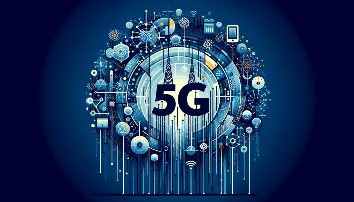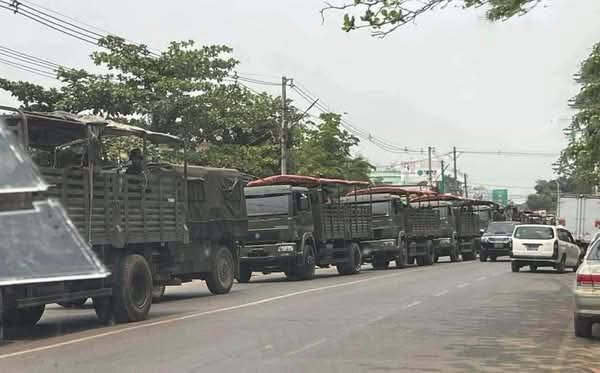
The development and adoption of 5G technology are influenced by a wide array of factors. Here are key aspects driving these processes:
1. Technological Advancements – Innovation in Network Architecture: Next-generation network architectures, like edge computing and multi-access edge computing (MEC), facilitate more efficient data processing and real-time interactions.





– **5G Standardization**: Global standards for 5G technology have improved interoperability and accelerated deployment by enabling seamless communication and collaboration among different networks.
– **Emerging Applications**: The growth of new use cases such as IoT, cloud gaming, virtual and augmented reality, and industrial automation drives demand for higher data speeds, lower latency, and greater connectivity.
### 2. **Economic Motivations**
– **Market Competition**: The increasing competition among telecom operators drives innovation and investment in 5G technology to deliver better services and retain market share.
– **Revenue Growth Opportunities**: New technologies and business models (e.g., IoT, edge computing) offer potential revenue streams for telcos, encouraging investment in 5G infrastructure.
– **Public Funding and Partnerships**: Governments and private sector partnerships can provide essential funding, accelerating deployment and supporting digital transformations in various sectors.
### 3. **Spectrum Allocation and Regulation**
– **Spectrum Auctions and Allocation**: The availability and allocation of suitable spectrum (e.g., millimeter wave, C-band, mid-band) significantly influence 5G deployment, with auctions and regulatory decisions impacting access and availability.
– **Regulatory Frameworks and Policies**: Governments establish regulatory frameworks that either facilitate or hinder the rollout of 5G services, affecting deployment, pricing, and access to necessary infrastructure.
### 4. **Infrastructure Readiness**
– **Fiber and Backhaul Networks**: The presence of robust fiber and backhaul networks enables the efficient transport of data, crucial for 5G deployment and performance.
– **Small Cell and Densification**: The widespread deployment of small cells and network densification efforts enhance indoor and outdoor coverage, ensuring that 5G services reach users more effectively.
### 5. **Consumer and Business Demand**
– **Smartphone Penetration and Adoption**: The increasing demand for smartphones and data services among consumers drives 5G adoption and investment in infrastructure.
– **Enterprise and Industry Adoption**: As businesses recognize the benefits of 5G, especially in areas like IoT, automation, and cloud computing, they invest in infrastructure and services, further accelerating adoption.
### 6. **Environmental Factors**
– **Geographical and Climatic Challenges**: Deploying 5G in areas with challenging geographical features (urban canyons, mountainous regions, etc.) or extreme climates (deserts, high-altitude areas) may require unique solutions and investments.
– **Natural Disasters and Infrastructure**: The resilience and recovery capabilities of networks in the aftermath of natural disasters can significantly influence public perception and demand for reliable, high-speed connectivity services.
### 7. **Public Perception and Education**
– **Health Concerns and Myths**: Public awareness and understanding of the health impacts of 5G can influence demand and adoption, as seen in instances of 5G-related protests and debates.
– **Education and Training**: Providing adequate information about the benefits of 5G to users and businesses can enhance acceptance and stimulate demand for 5G services and applications.
### 8. **Global Geopolitics and Trade**
– **Trade Restrictions and Sanctions**: International trade tensions or sanctions affecting telecom suppliers or technology can limit access to cutting-edge 5G technology and impact global deployment and innovation.
– **Cybersecurity and Sovereignty**: Governments and organizations worldwide are prioritizing cybersecurity in 5G networks due to concerns about data safety and national sovereignty, which affects the development and adoption of new technologies.
### Examples of Implementation Variability
– **Pioneers and Innovators**: Countries like **South Korea**, **China**, and **United States** have been at the forefront of 5G development and deployment due to their aggressive investment strategies and supportive regulatory environments.
– **European Union**: Member states within the EU have experienced variable success with deploying 5G technology, with some nations like **Sweden** and **Finland** progressing more quickly than others.
– **Africa and Asia**: Regions with less mature telecommunications markets often face challenges in deploying 5G due to limited financial resources, infrastructure gaps, and regulatory hurdles.
### Conclusion
The adoption of 5G technology is shaped by a complex interplay of technological, economic, regulatory, social, and environmental factors. As countries, organizations, and individuals navigate this landscape, understanding these dynamics and addressing disparities will be critical for maximizing the potential of 5G technology.


Leave a Reply